BY LETTER
Uppalavanna Complex, The
Galactography > Sephirotic Empires > Keter Dominion
Galactography > Regions of Space > Middle Regions/Hinter-regions
Galactography > Systems and Worlds > Systems & Worlds U - V
Galactography > Regions of Space > Middle Regions/Hinter-regions
Galactography > Systems and Worlds > Systems & Worlds U - V
A Keterist system which includes numerous Ascension Mazes | |
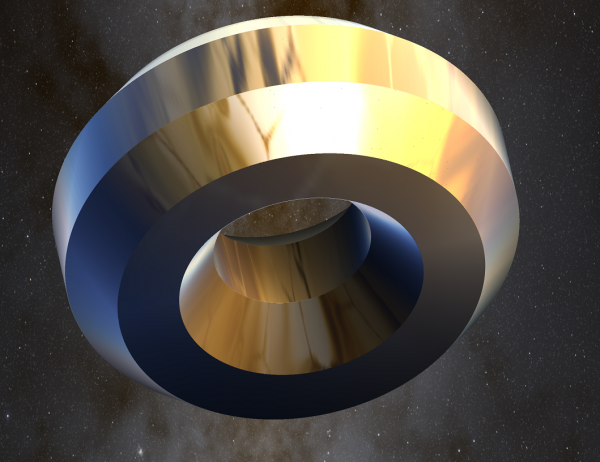 Image from Steve Bowers | |
| Aggi Superobject | |
Uppalavanna System - Data Panel | |
| Star | HIP 96353, Uppalavanna |
|---|---|
| Type | K0 III Orange Giant |
| Luminosity | 371 x Sol |
| Distance from Sol | 1378 ly |
| Constellation | Aquila |
| Colonised | 4722 AT |
| Allegiance | Keter Dominion |
| Planets | This system had three Neptunian type worlds in relatively wide orbits, and four airless terrestrial Apnean worlds nearer the star. During the ComEmp period the terrestrial worlds were gradually disassembled, and a number of large and exotic superobjects were constructed in their place. Superobjects in the Uppalavanna system: Aggi Udaka Vayu Pathavi Since the Biovirate War the remaining Neptunian worlds have been drastically re-engineered into Keterist megastructures which have retained the names of the original planets. Post-neptunian megastructures in the Uppalavanna system: Nilavanna Mimadhavala Panduvanna . |
The Uppalavanna system was colonised in 4722 AT by the Tazared/Rift Mission, which carried a contingent of Keterist modosophonts and a smaller number of first singularity transapients. An important part of Keterist culture is the goal of ascension to higher toposophic levels, and most of the T/R colonists harboured ambitions to ascend as soon as possible. Many of these colonists would not in fact be successful in this, but the transapients of the T/R Mission had devised alternative and worthwhile roles for those who did not achieve toposophic ascension.
The Uppalavanna Ascension Mazes
The Keterists started to modify the four innermost worlds almost immediately. These four worlds were named Aggi, Udaka, Vayu and Pathavi, but over the next six centuries they were disassembled and reconfigured into exotic superobjects. These objects were much larger and lower in density than the original planets, and were predominantly golden in colour. Many Keterist megastructures are brightly coloured, often incorporating curiously shifting rainbow shades.Each superobject was designed to function as an Ascension Maze, a construct that assists individuals and/or groups to pass through the changes necessary to pass through to the next toposophic level. Each superobject contains a separate maze, but in many cases a candidate will transfer from one maze to another, for reasons that are not understood.
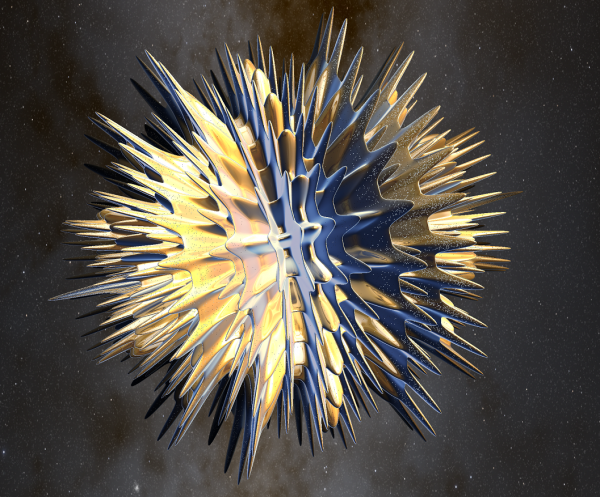 Image from Steve Bowers | |
| Udaka Superobject | |
Inside the Mazes
No modosophont can fully comprehend the processes and events that occur during the passage of an individual or group through the ascension mazes in this (or any other) system. Even those sophonts who have passed partway through the maze but failed to fully ascend cannot give a coherent account of the events that occur; some of their memories are altered or elided altogether following a failed attempt, since the very nature of these events would cause insanity in a modosophont. But the memories that do remain are often vivid, bizarre and disorienting. Many of the environments inside the mazes appear to be fractal and may subtend into spaces that cannot exist in normal space. Others appear to be fully physical in nature, although they are often fractal and continuously changing in character.One phenomenon that seems to occur repeatedly in the mazes of Uppalavanna is the physical and mental duplication and separation of multiple instances of the individual. These multiple instances are then encouraged to co-operate and compete with each other, apparently to the death in many cases. The separate copies are each given different augmentations and special abilities, far beyond normal modosophont levels, and these disparate entities are repeatedly merged and split asunder over time. But all these impressions can only be regarded as a metaphor or simile, poorly describing the actual processes that occur under the watchful mental gaze of ineffable transapient guides.
Eventually the successful newly-ascended entity is instantiated in a new substrate, and begins eir studies as an inexperienced, disoriented and wonder-filled transapient. The ascension process is just the start of a very steep learning curve that seems exponential to modo perceptions. On the other hand, the majority of ascension candidates are unsuccessful, and return to their previous status in a profoundly changed state.
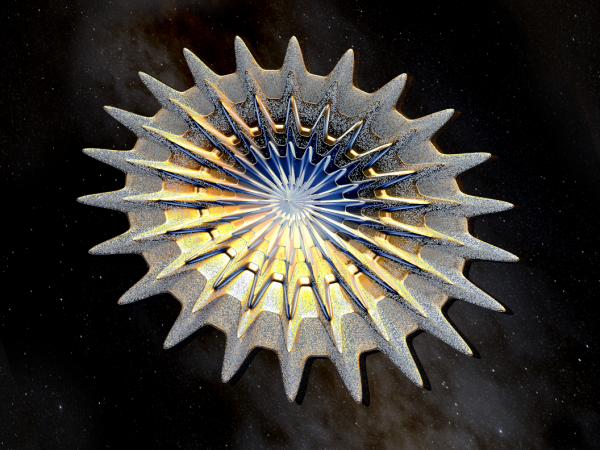 Image from Steve Bowers | |
| Vayu Superobject | |
Unsuccessful Ascension candidates; roles and goals
Although the Ascension Mazes of the Tazared/Rift faction are particularly successful in producing competent and stable new transapient entities, the majority of the candidates are not successful in passing through the singularity barrier. There are four main paths which unsuccessful ascendees can follow, and the Uppalavanna transapients are expert at directing individuals and groups towards the path which suits them best.- Many unsuccessful ascendees choose to become God Dwellers; these are modosophonts who live in an environment that is fully controlled and monitored by the transapients of this system, and are continually in communion with them. This communion takes many forms - some open their minds fully to the gods, and allow all of their mental processes to occur under the guidance and oversight of their mentors. Some of these god dwellers become infomorphs and sophtware, beings of pure data that can merge and separate from one another at will. At any point the local transapients can intervene and reset the mental state of such beings to an earlier state, or guide them towards more complex relationships. Other God dwellers remain fully embodied, as bionts, cyborgs or vecs, and inhabit suitable environments in and around the modified worlds of this system.
- Some individuals pass through a series of training programs, modifications and augmentations that prepare them for a second or subsequent attempt at ascension. In many cases this preparation involves radical changes in mental and physical form, sometimes involving the merger of several individuals into a group or tribe mind. Other individuals edit themselves radically (with guidance from transap advisers) to become more likely to ascend successfully.
- A significant number of failed ascendees choose to become missionaries. These individuals are trained and augmented by transapient tachididaxy, to give them the skills and experience necessary to persuade citizens in other systems and cultures to follow the Keterist path, and to come to Uppalavanna (or to some other convenient Keterist ascension maze) and attempt to follow the path of ascension. A significant number of all of these three groups are transavant in nature, and have significant skills that extend into the transapient range.
- Another cohort of failed ascendees choose to leave the Keter Dominion altogether, and take no further part in the Keterist ascension project. These individuals and groups are often the most profoundly affected by the Maze experience, and they often need extensive neuropsychological remediation before they can be considered mentally fit. Unlike some other ascension/transcension processes, the Uppalavanna ascension process is accompanied by a guarantee that the failed ascendees will be restored to full mental health before they are returned to normal life. In some cases this restoration takes years, decades or millennia, but no-one with any kind of pathological failed ascension syndrome leaves the system uncured.
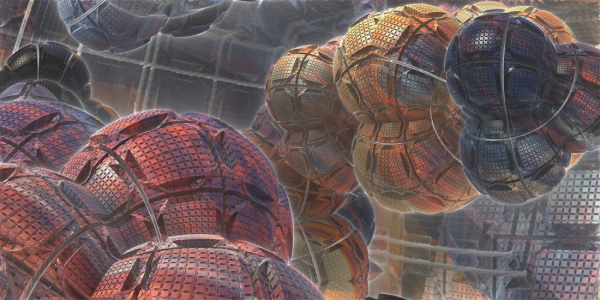 Image from Phantasus | |
| The interior of an Ascension Maze inside Udaka superobject | |
The Emmit Transcensions
By 5500 AT, modosophonts were travelling to the Uppalavanna Complex from many nearby systems, hoping to achieve ascension to a higher toposophic level. Many came from the Emmit system, 16 light years away, which was one of many Biovirate systems in the Aquila Rift volume. Candidates were arriving at Uppalavanna with the explicit intention of becoming a transapient and returning to their home system, which followed the Biovirate's prejudices in favour of biotechnology. Although Emmit was home to a small number of S:1 transapient entities, these were purely biological in nature, and these entities were highly resistant to the introduction of non-biological minds into their system.At first, the candidates from Emmit who successfully ascended were embodied inside drytech or synanotech bodies, and when they arrived back in the Emmit system they were ostracised and eventually exiled. In an attempt to accommodate the Biovirate's predilection for biotech, the Keterists in Uppalavanna worked to create biological substrates for those transapients who wished to return to Emmit, and by 5500 they succeeded. Soon there was a small, but significant number of transapients embodied in biological substrates returning to that system.
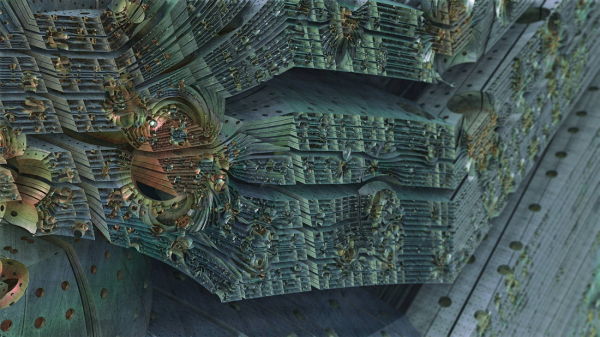 Image from Phantasus | |
| The interior of an Ascension Maze inside Aggi superobject | |
The Biovirate transapients accused the Keterists of Uppalavanna of deliberately altering the ascendees and sending them back in this altered state in order to subvert the Biovirate empire. These transcended spies would pollute the pure Biotech culture of the Biovirate with hylotechnology and convert the population to Keterism.
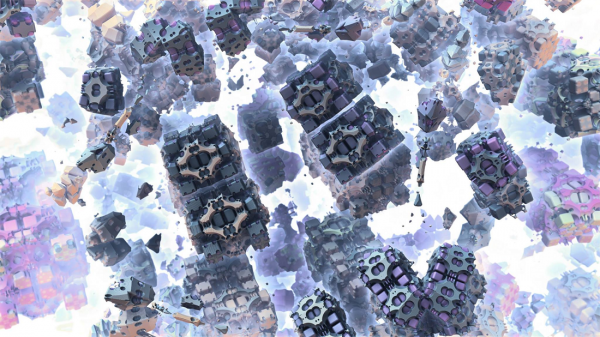 Image from Phantasus | |
| Part of the interior of the post-Neptunian megastructure, Nilavanna; this environment houses many billions of God-Dweller modosophonts, devout followers of the Keterist religion and philosophy | |
The Biovirate War
The status of these alleged 'transcended' spies were just one of the many controversies that inflamed the conflict between Keter and the Biovirate; mostly these were grounded in a paranoia on the part of the Biovirate that suggested that Keterism was dedicated to eliminating the biotech-based culture of the smaller empire. Although this fear seems to have been mostly ungrounded, the conflict escalated to full-scale war in 5802 AT. A number of Biovirate conversion-drive ships which were masquerading as passenger craft in the Uppalavanna system suddenly accelerated towards the Ascension Mazes, intent on causing damage. The Keterists were taken by surprise, since no war had been declared; but they were successful in destroying each of the ships before impact in each case. Nevertheless both the Aggi and Yayu superobjects were significantly damaged by debris.The war that followed was very one-sided; although the Biovirate had a number of transapient vat-brains and powerful conversion-drive ships, they were outmatched by the archai of the Keter Dominion and their reactionless warcraft. The most significant asset that the Biovirate posessed were the so-called Zoeboxes, powerful clarketech strategy-making devices that could throw any battle into a state of chaos that sometimes allowed the vat-brains to win temporary victories. The origin of the Zoeboxes is not known for certain, but is probably associated with a short-lived S:4 blight in the Zoeific Biopolity that may have hidden clarketech devices in a number of locations within this volume.
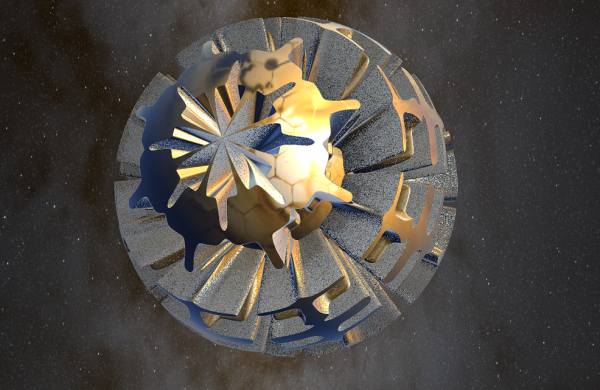 Image from Steve Bowers | |
| Pathavi Superobject | |
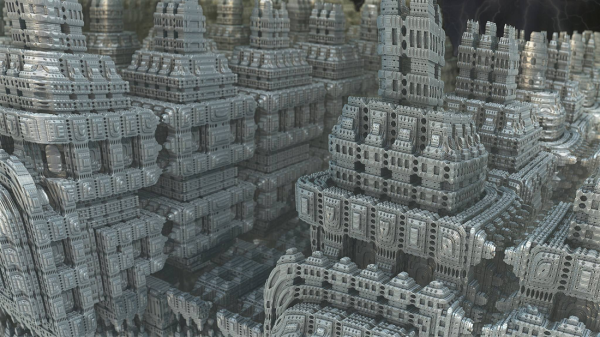 Image from Phantasus | |
| The interior of an Ascension Maze inside Pathavi superobject. | |
Uppalavanna in the Current Era
Since the Biovirate conflict, the three Neptunian worlds in the outer reaches of this system have been converted to Neptune-mass brains, which together host an Archai-level S:4 entity linked intimately by comm-gauge wormhole links to the Keter Dominion noosphere. Traversable wormholes link this system indirectly to Tazared and eventually to Ain Soph Aur, via multistage trunk routes.The volume between Uppalavanna and Emmit has become a breeding ground for biowars, which burrow into deep space objects and planemos and hatch their eggs using fusion-derived metabolic energy. The lesser transapients of both systems are currently engaged on a project to provolve the biowar population towards full sophonce, a project which has been only partially successful. As well as a finely developed and sophisticated culture that has emerged among some of the biowars in this sector, another faction has emerged which consists of disaffected and solitary sophont warships that often abscond into deep space, apparently with the intention of causing various kinds of mayhem.
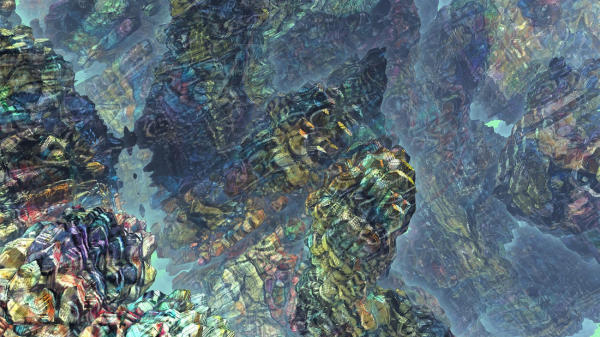 Image from Phantasus | |
| The interior of an Ascension Maze inside Vayu superobject. This environment is believed to be used exclusively to assist the transition of S:1 transapients towards the second toposophic level. | |
Related Articles
Appears in Topics
Development Notes
Text by Steve Bowers
Initially published on 09 May 2020.
Initially published on 09 May 2020.






